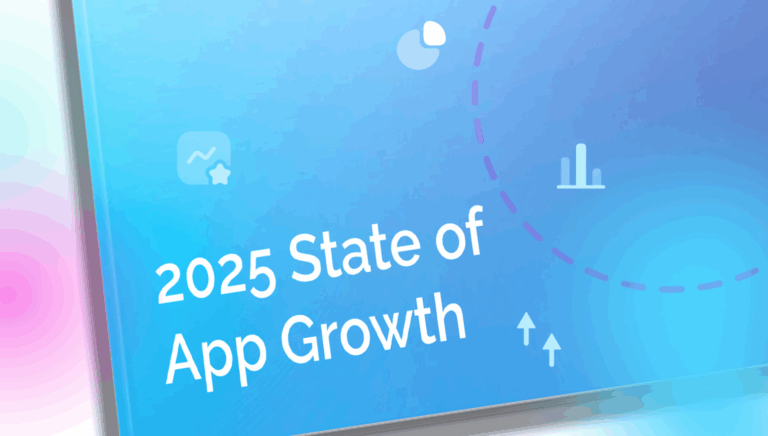Branch’s 2025 State of App Growth survey reveals an industry facing more complexity than ever. Key takeaways include:
- Attribution clarity is still elusive; only 18% of marketers feel very confident they can tie installs to the right source.
- Acquisition costs are the No. 1 challenge, with 36% citing scale without overspending as their top hurdle.
- Marketers underutilize deep linking for retention. While 63% use it for onboarding, just 20% apply it to win back lapsed users.
- Multichannel strategies are now standard, with teams managing an average of 3.8 growth channels.
- Privacy is reshaping measurement, as 71% of marketers report revenue impact from blind spots, spurring adoption of server-side tracking and first-party data.
- Retention is where cracks show, with nearly half struggling to activate user data or measure post-install engagement.
- Artificial intelligence (AI) is everywhere, powering predictive analytics, personalization, and creative optimization — but trust, brand safety, and workflow integration remain barriers.
Together, these findings show that sustainable app growth in 2025 requires smarter measurement, unified data strategies, and a sharper focus on retention and user experience.
About the survey
The 2025 State of App Growth survey was conducted in May 2025 in partnership with Global Surveyz. We collected responses from 750 senior leaders in marketing, product, and growth across the U.S., the U.K., EMEA, and APAC. Each respondent works at a company with more than 500 employees and plays a direct role in mobile initiatives, ensuring the insights reflect real-world enterprise practices.
The survey evenly represented industries, with participants from retail, finance, healthcare, and other verticals — making this one of the most comprehensive snapshots of how global teams are approaching mobile growth in a privacy-first era.
The new growth reality
Over the past two years, the rules of mobile app growth have been rewritten. Privacy regulations, platform changes like Apple’s App Tracking Transparency (ATT) and Google’s Privacy Sandbox, and the rise of SKAdNetwork (SKAN) have made it harder than ever for marketers to see where installs come from or measure return on investment (ROI) with certainty. At the same time, user journeys now span multiple devices and touchpoints, raising the bar for seamless, connected experiences.
With this backdrop, let’s take a deeper look at both the challenges and the creative strategies shaping mobile growth in 2025.
Attribution confidence is still low
Attribution remains one of the toughest nuts to crack. Only 18% of marketers feel very confident in their ability to tie installs to the right source, while the majority operate with partial or shaky visibility. This uncertainty often stems from inconsistent use of attributable links across channels. Without comprehensive tracking, installs are misclassified as “organic,” skewing results and making it harder to allocate budget wisely.
The silver lining? Teams are investing in broader link coverage and privacy-safe measurement infrastructure to close these gaps.
Acquisition: Scale without breaking the bank
The biggest acquisition challenge is cost. Thirty-six percent of marketers say scaling user growth without skyrocketing acquisition costs is their top concern. Converting ad clicks to installs (24%) and finding the right audiences (23%) follow closely behind.
This underscores a shift toward smarter, efficiency-driven strategies — optimizing what’s already measurable, rather than pouring budget into unproven tactics.
Deep linking: Essential, but underused for retention
Deep linking is a key element in acquisition: 63% use it for onboarding and 61% use it for ad campaign performance. By reducing friction and guiding users directly to in-app content, deep links boost conversions and first impressions.
But when it comes to retention, adoption lags. Only 20% use deep linking to reengage lapsed users and just 5% use it for referral programs. This gap represents a major opportunity. Extending deep linking across the full lifecycle could unlock more sustainable growth.
Channel mix: Multichannel is the new standard
Marketers now juggle an average of 3.8 channels. App store optimization (ASO) (56%) and Google Ads (50%) lead the pack, followed by paid social (44%), email (40%), and organic social (39%). More experimental plays — like QR (quick response) codes, influencer campaigns, and affiliate marketing — are also gaining traction.
Retail teams lead with four channels on average, while healthcare sits closer to 3.4, reflecting its focus on engagement rather than aggressive acquisition.
Privacy: The new growth engine
The impact of privacy changes is undeniable. Seventy-one percent of respondents say regulations have created blind spots that hurt revenue. Cross-channel attribution is harder (41%), contextual targeting is more important (40%), and data collection is pricier (39%).
In response, teams are embracing server-side tracking (38%) and first-party data (30%) to keep measurement accurate while staying compliant. The lesson: Privacy-first doesn’t have to mean growth-stalled — it just requires new tools and smarter infrastructure.
Retention: Where growth breaks down
Retention challenges loom large. Nearly half of marketers (47%) say they struggle to activate user data for personalization or even measure retention effectively. Fragmented engagement across channels (38%) and technical limitations (40%) make it even harder to keep users active past onboarding.
Here again, unifying data and investing in post-onboarding experiences stand out as key opportunities.
AI: From buzzword to growth stack
AI has moved beyond hype to daily practice. Every respondent uses AI in some capacity, most often for predictive analytics (48%), personalization (46%), and creative optimization (46%). Large language models are also gaining ground in content ideation (44%).
Still, obstacles remain. The biggest concerns are trust and privacy (55%), ensuring brand-safe content (51%), and integrating AI into existing workflows (51%). Internal adoption hurdles add another layer.
The bottom line
The 2025 State of App Growth survey reveals an industry at a crossroads. Marketers are grappling with signal loss and rising costs, but they’re also building smarter, privacy-safe measurement strategies, leaning into deep linking, experimenting across channels, and embracing AI.
The message is clear: Growth in 2025 is no longer about chasing every install; it’s about doing more with the signals you can trust, building unified views of performance, and creating experiences that keep users coming back.
Download for the full lowdown: 2025 State of App Growth




